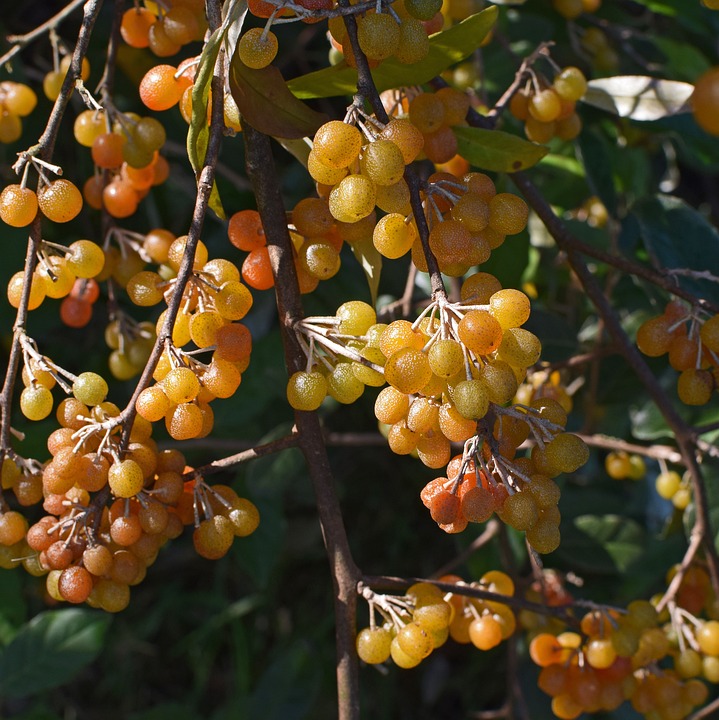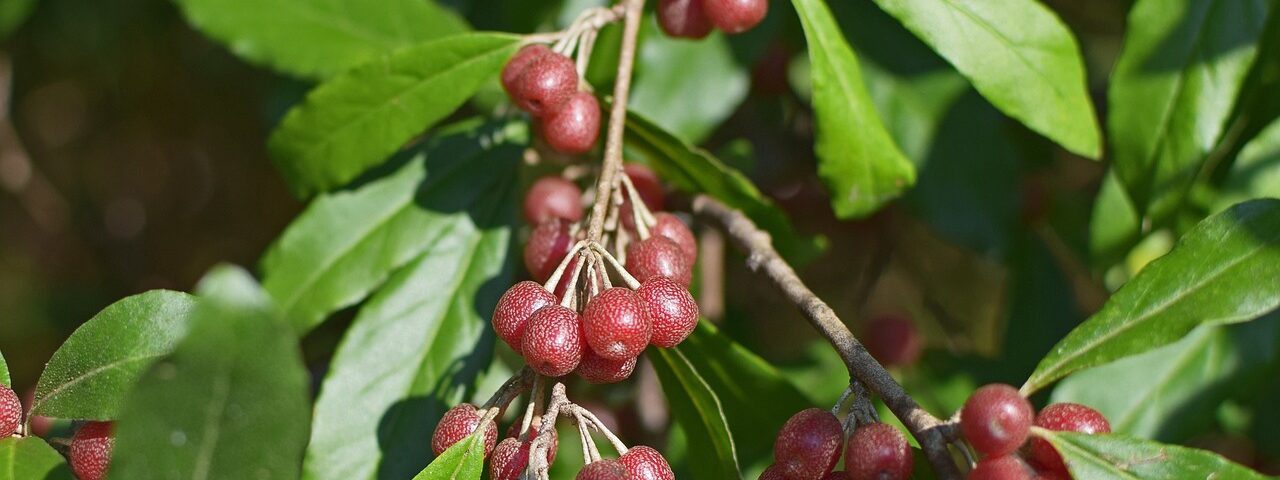Foraging for autumn olive berries (Elaeagnus umbellata) has become one of my favorite fall activities. These small, tart berries, often overlooked, are a delightful and nutritious find during the autumn months. Here’s a complete guide to help you identify, prepare, and store autumn olive berries safely.

Growing Range
Autumn olive is native to Asia but has become widely established across the United States, particularly in the eastern and southern regions. It can often be found in disturbed areas, fields, and along roadsides. The plant thrives in USDA hardiness zones 4 to 8, making it adaptable to various climates and soil types.
Identifying Autumn Olive Berries
When searching for autumn olive berries, keep these characteristics in mind:
- Appearance: The berries are small, typically about the size of a pea, and can range in color from yellow to bright red, often speckled with silver dots. They grow in clusters, making them easier to spot.
- Leaves and Growth: The leaves are silver-green and elongated, with a slightly silvery underside. Autumn olive shrubs are usually bushy, reaching up to 10 feet in height.
- Harvesting Season: Berries ripen in late summer to early autumn, typically peaking in September and October. The flavor improves after a light frost .
Culinary Uses for Autumn Olive Berries
Autumn olive berries are versatile and can be used in various culinary applications:
- Jams and Jellies: These tart berries make excellent jams and jellies, often paired with sweeter fruits for a balanced flavor.
- Smoothies and Sauces: Blending the berries into smoothies or sauces adds a unique tangy flavor, perfect for drizzling over pancakes or yogurt.
- Baking: Incorporate the berries into muffins, pies, or other baked goods for a burst of flavor and nutrition .
Preparing Autumn Olive Berries
- Harvesting: Snip the berries from the shrub, being careful to avoid the thorny branches. Wearing gloves can help protect against scratches.
- Cleaning: Rinse the harvested berries thoroughly under cold water to remove dirt and any potential insects.
- Processing:
- For Jam: Simmer the berries with sugar and pectin to create a delicious jam.
- For Smoothies: Blend the cleaned berries with yogurt and other fruits for a refreshing smoothie.
- For Baking: Mix the berries into batter for muffins or pies .
Storing Autumn Olive Berries
- Refrigeration: Store cleaned berries in a sealed container in the refrigerator for up to a week.
- Freezing: Freeze the berries by laying them out in a single layer on a baking sheet, then transferring them to a freezer bag for longer storage. They can last up to six months in the freezer.
Safety Tips for Foraging
- Identifying Edible Species: Ensure that you correctly identify autumn olive and avoid similar-looking plants that may be toxic.
- Handling and Preparation: The berries are safe to eat raw, but their tartness may not be appealing to everyone. Cooking helps mellow their flavor.
- Storage: Use fresh berries within a week for optimal flavor and nutrition. Always check for signs of spoilage before use .
Conclusion
Foraging for autumn olive berries is not only rewarding but also a delicious way to enjoy the bounty of fall. These berries provide numerous culinary options, making them a fantastic addition to any forager’s harvest. Remember to forage responsibly, leaving plenty for wildlife and future harvests.
For more detailed information about foraging autumn olive berries, check out resources like Eat Weeds or Unruly Gardening.
